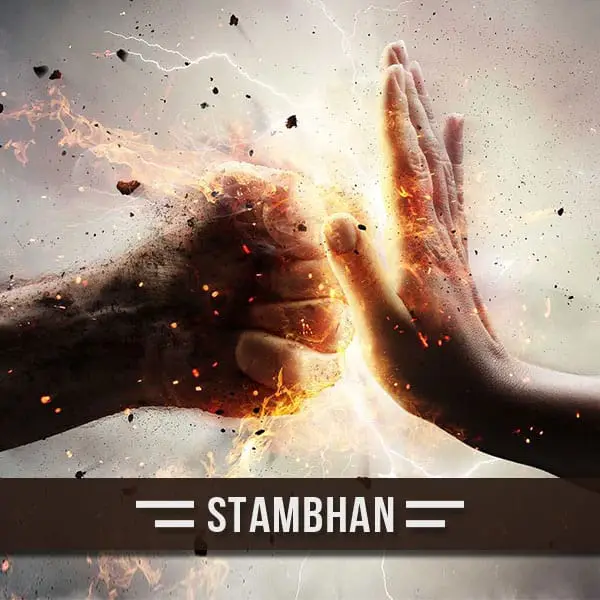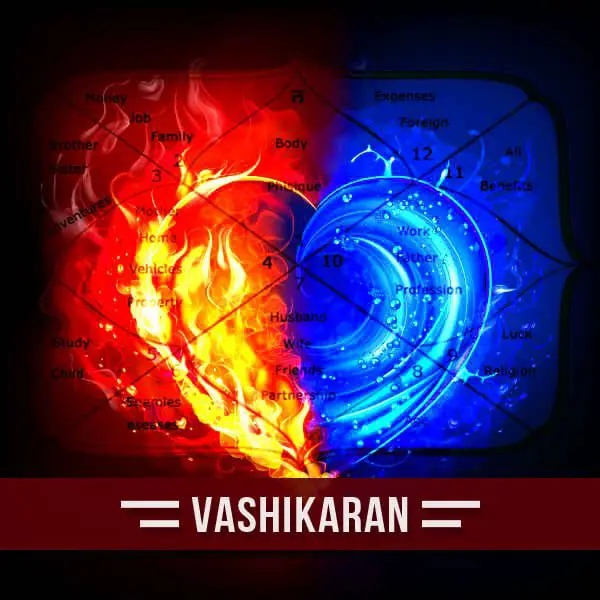What is Mantra?
What is Mantra/Gayatri Mantra: A “Mantra” is a sacred utterance, a numinous sound, a syllable, word or phonemes, or group of words in Sanskrit believed by practitioners to have psychological and spiritual powers. A mantra may or may not have syntactic structure or literal meaning. Gayatri Mantra
The earliest mantras were composed in Vedic Sanskrit by Hindus in India, and are at least 3000 years old. Mantras now exist in various schools of Hinduism, Buddhism, Jainism and Sikhism. In Japanese Shingon tradition, the word Shingon means mantra. Similar hymns, chants, compositions and concepts are found in Zoroastrianism, Taoism, Christianity and elsewhere. Gayatri Mantra
The use, structure, function, importance, and types of mantras vary according to the school and philosophy of Hinduism and of Buddhism. Mantras serve a central role in tantra. In this school, mantras are considered to be a sacred formula and a deeply personal ritual, effective only after initiation. In other schools of Hinduism, Buddhism, Jainism or Sikhism, initiation is not a requirement.
Mantras come in many forms, including verses from the Rigveda and musical chants from the Sāmaveda. They are typically melodic, mathematically structured meters, believed to be resonant with numinous qualities. At its simplest, the word ॐ (Aum, Om) serves as a mantra. In more sophisticated forms, mantras are melodic phrases with spiritual interpretations such as a human longing for truth, reality, light, immortality, peace, love, knowledge, and action. Some mantras have no literal meaning, yet are musically uplifting and spiritually meaningful. Gayatri Mantra
There is a long history of scholarly disagreement on the meaning of mantras and whether they are really instruments of mind, as implied by the etymological origin of the word mantra. One school suggests mantras are mostly meaningless sound constructs, while the other holds them to be mostly meaningful linguistic instruments of mind. Both schools agree that mantras have melody and a well designed mathematical precision in their construction, and that their influence on the reciting person and listener is similar to that observed on people around the world listening to their beloved music that is devoid of words.
Staal presents a non-linguistic view of mantras. He suggests that verse mantras are metered and harmonized to mathematical precision (for example, in the viharanam technique), which resonate, but a lot of them are a hodgepodge of meaningless constructs such as are found in folk music around the world. Staal cautions that there are many mantras that can be translated and do have spiritual meaning and philosophical themes central to Hinduism, but that does not mean all mantras have literal meaning. He further notes that even when mantras do not have literal meaning, they do set a tone and ambience in the ritual as they are recited and thus have a straightforward and uncontroversial ritualistic meaning.
The sounds may lack literal meaning, but they can have an effect. He compares mantras to bird songs, that have the power to communicate, yet do not have a literal meaning. On that saman category of Hindu mantras, which Staal described as resembling the arias of Bach’s oratorios and other European classics, he notes that these mantras have musical structure, but they almost always are completely different from anything in the syntax of natural languages. Mantras are literally meaningless, yet musically meaningful to Staal.
The saman chant mantras were transmitted, from one Hindu generation to next, verbally for over 1000 years, but never written, a feat suggests Staal that was made possible by the strict mathematical principles used in constructing the mantras. These saman chant mantras are also mostly meaningless, cannot be literally translated as Sanskrit or any Indian language, but nevertheless are beautiful in their resonant themes, variations, inversions and distribution. They draw the devotee in. Staal is not the first person to view Hindu mantras in this manner. The ancient Hindu Vedic ritualist Kautsa was one of the earliest scholars to note that mantras are meaningless, their function is phonetic and syntactic not semantic.
Sadhana | मंत्र साधना
Sadhana/मंत्र साधना: is Brahma and combination of some special sounds is called Mantra. Without the Shabda, the evolution of meaning is not possible. Therefore, the relation between the word and meaning is same as Shiva and Shakti. In the root of the words power wanders which is related to the indoctrination of human beings and gods. According to the hymn ‘गुहाति गुह्य गोप्तत्वं’ the Mantras when recited silently, it becomes meditation and by that one can get the eternal. Chanting Mantra is not only a sound but consists of full power. It is a type of symbolic language. By chanting the spell a vibration is created, which is mixed with ether and spreads all over the biosphere. (Sadhana)
वागर्था विव सम्प्रव्क्तौ वागर्थ प्रतिपतत्ये।
जगत: पितरौ वन्दे पार्वती परमेश्वरी॥
Such as chanting any spell of Sun, a certain vibration is created, that vibration through ether reaches to Sun and returns back. While returning it carries the vigorousness and sensation of the Sun, which touches the accomplisher and provides him the vigorousness and sensation.
Body of Sadhana:
The body of human beings is universal and this creation is rhythmic. In this universal body from high to low energy flows regularly. This energy contains Brahma, Vishnu and Rudra. And in sense organs are controlled by Lord Indra. All these activities are made through 72,000 nerves in the body. These nerves are not elements but the rhythm of the movements of the body parts. In this rhythm, Sun, moon and spinal cord rhythms are under the wish. This changes the lifestyle of a person. With some modified rhythms people proceed ahead.
The form of chanting spell is also rhythmic. This rhythm, in Vedic literature is known as shaft (छन्द). During the accomplishment the spell chanted, it has mounting and this mounting is in a certain rhythm. In this rhythm will power, expectations and resolution is embodied. The Spell works on Mantra Power. Without power, the Mantra is dead.
The Soul of the Sadhana Mantra:
The selection of Mantra is done very systematically. It is necessary to understand the soul of the spell. Is a Mantra Shiva? Vishnu? Is it Molecule or Atom?
In every spell there is a amalgamation of three powers Shiva, Power and Molecule. Without these three no substance or element cannot be made. The world is established with these three elements. Therefore the Mantra consists of these three elements. Lord Shiva, through these powers only makes evolution, stability and destruction. The bases of these activities are souls. Hence Mantra can give luxury and salvation both.
There is a difference between Mantra and Stotra. Stotra is only the praise of any deity, which can be made by any words. If the words are interchanged, it makes hardly any difference but in spells it is not possible. By interchanging the words of a Stotra, it cannot be reformed as Mantra. But if the Stotra is recited with full concentration and devotion, it works as Mantra(Sadhana). In Kanakdhara Stotra and Hanuman Chalisa both are Stotra but gives providential effects like Mantra. Read more..
मन्त्र साधना | Sadhana
शब्द ही “ब्रह्म” है, शब्दों का विशेष संयोजन ही “मन्त्र” कहलाता है। ‘शब्द’ के बिना शब्द के अर्थ की उत्पत्ति सम्भव नहीं है। इसलिए ‘शब्द’ और ‘अर्थ’ का सम्बन्ध ठीक वैसा ही है, जैसा कि ‘शिव’ और ‘शक्ति’ का। शब्द के मूल में शक्ति का विचरण होता है, जिसका सम्बन्ध मनुष्य की भावना एवं ईश्वर से रहता है, गुहाति गुह्य गोप्तत्वं’ के अनुसार मन्त्र का मन ही मन गोपनीय रखकर जाप करने से ध्यान होता है जिससे परमात्मा की प्राप्ति होती है। मन्त्र केवल ध्वनि ही नहीं है अपितु उसके मूल में पूर्ण शक्ति तत्व विद्धमान है। यह एक प्रकार की सांकेतिक एवं भावनात्मक भाषा है। मन्त्र उच्चारण से एक विशिष्ट प्रकार का ध्वनि कम्पन (Vibration) बनता है, जो तुरंत ईथर में मिलकर पूरे विश्व के वायुमंडल में व्याप्त हो जाता है।
वागर्था विव सम्प्रव्क्तौ वागर्थ प्रतिपतत्ये।
जगत: पितरौ वन्दे पार्वती परमेश्वरी॥
जैसे: सूर्य का कोई मन्त्र है, तो सूर्य मन्त्र के उच्चारण से एक विशेष प्रकार की ध्वनि कम्पन बनता है वह कम्पन ऊपर उठते हुए ‘ईथर’ के माध्यम से कुछ ही क्षणों में सूर्य देवता तक पहुँच कर लौट आता है। लौटते समय उन कम्पनो में सूर्य की सूक्ष्म शक्ति, तेजस्विता एवं चेतना विद्धमान रहती है, जो पुन: साधक के शरीर से टकरा कर उसमें उन गुणों का संचार बढ़ा देती है, जिस कामना के साथ साधक ने मन्त्र का जाप किया था इस प्रकार सूर्य मन्त्र के उच्चारण से सूर्य से सम्बन्धित तेजस्विता साधक को प्राप्त हो जाती है।
शरीर मंत्र साधना:
मनुष्य शरीर ब्रह्माण्डमय है और यह सृष्टि लयात्मक (Rhythmic) है। इस ब्रह्माण्डमय शरीर में सत् से रजस, रजस से तमस और तमस से सत् में शक्ति का शाश्वत प्रवाह (Flow) होता रहता है। जिसमें रूद्र, विष्णु और ब्रह्मा का स्थान हैं। और इन्द्रियों (Sense Organs) पर इन्द्र का शासन है। यह सब कार्य-कलाप 72000 हजार नाड़ियों के माध्यम से होता है। ये नाडियां तन्तु नहीं हैं, यह शरीर के अवयवों में पैदा होने वाली लय हैं। इन लयों में सूर्य, चन्द्र और सुषुम्ना लय मुख्य हैं, जो इच्छा के आधीन हैं। ये ही जीवन की धारा को मोडती, मरोड़ती रहती है। मंत्र की इन्हीं 72000 लयों में से कुछ लयों को परिमार्जित, परिष्कृत करके मनुष्य आगे बढ़ता है।
मंत्र साधना पाठ का स्वरूप भी लयात्मक है। मंत्र की लय को वैदिक साहित्य में छन्द का नाम दिया गया है। साधना के समय जो मंत्रोच्चारण होता है, मन्त्र स्वर का आरोह-अवरोह होता है, वह एक लय होती है, यह लय एक क्रम भी होता है। इस लय में इच्छा, वासना और संकल्प शक्ति समाहित होती है। मन्त्र के प्रत्येक स्वर में वासना शक्ति का होना सफलता के लिये अत्यावश्यक है। वासना संकल्प शक्ति को जन्म देती है। संकल्प शक्ति से मन्त्र कार्य करता है, बिना संकल्प शक्ति के मंत्र निर्जीव रहता है।
आत्मा मंत्र साधना:
मंत्र का चयन बड़े विधि-विधान से होता है इसमें मन्त्र की आत्मा को समझना आवश्यक है क्या मन्त्र शिव है? या शक्ति है? या अणु परमाणु है?
हर तत्व में शिव, शक्ति और अणु इन तीनों का समावेश होता है, बिना इन तीनों के किसी पदार्थ या तत्व की कल्पना नहीं की जा सकती। विश्व इन तीनों तत्वों से प्रतिष्ठित है। अत: ‘मन्त्र’ में भी इन तीनों तत्वों का उचित सामंजस्यपूर्ण अस्तित्व होता है। शिव, शक्ति के माध्यम से ही सृष्टि स्थिति संहार आदि कृत्य करती है और इन कृत्यों का आधार आत्मा ही होती है। इस प्रकार शिव, शक्ति और आत्मा ये तीन ही तत्व सर्वोपरि है। शिव और शक्ति के उचित सामंजस्य के कारण ही मन्त्र भोग और मोक्ष दोनों ही गतियाँ देने में समर्थ है।
मन्त्र और स्तोत्र में भेद होता है, स्तोत्र केवल मात्र किसी देवता की स्तुति होती है जो किसी भी प्रकार के शब्दों में सम्भव है, यदि स्तोत्र में निहित शब्दों को बदल भी दें तो कोई अंतर नहीं पड़ता, स्तोत्र में एक ही भाव को भिन्न भिन्न शब्दों में प्रस्तुत किया जा सकता है पर मन्त्र में ऐसा सम्भव नहीं, स्तोत्र के शब्दों को बदल देने पर भी स्तोत्र, मन्त्र का स्थान ग्रहण कर नहीं सकता पर आन्तरिक मन और प्राण शक्ति से एकाग्र होकर स्तोत्र का पाठ नियमित करें तो वह स्तोत्र भी ‘मन्त्र’ का रूप धारण कर लेता है, कालान्तर में वह स्तोत्र भी उतना ही फलप्रद बन जाता है, जितना कि मन्त्र। हनुमान चालीसा या ‘कनकधारा स्तोत्र’ एक प्रकार से मन्त्र के रूप में प्रयुक्त होते है और साधक के कार्य में मन्त्रवत सफलता देते है।
मंत्र देवता स्वरूप है, निरन्तर मंत्र जप से देवता का साक्षात्कार होता है। निरन्तर प्रयास करने पर भी यदि देवता के दर्शन नहीं होते तो फिर गुरु की सहायता लेनी पड़ती है। वैदिक मन्त्रों में यह प्रक्रिया लुप्त हो गई है। इसीलिए वैदिक मंत्र आज के युग के लिये पूर्ण फलदायी नही हैं। इसका एक मुख्य कारण यह है कि कलयुग Read more..




